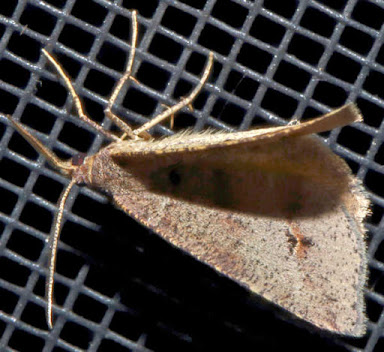Pseudozarba orthopetes
Pseudozarba orthopetes EUSTROTIINAE NOCTUIDAE
The only reference to I can find on the biology is under the previous genus Eublemma.
Some members of the Pseudozarba (Eublemma) genus are predators of scale insects, while others feed on plants, (Moths of Australia, Common 1990).
The wing span was probably about 20mm.
Family:- NOCTUIDAE
Sub Family:- EUSTROTIINAE
Genus:- Pseudozarba
Species:- orthopetes
It has been quite a while since I have found a new moth to put on this Blog.
Although we are getting a few moths coming to the house lights at night, the numbers are a long way down on the years before this recent dry period. We are still in drought conditions although some areas around us have had storms, we have only had limited rain fall.
************************************************************************************



















































